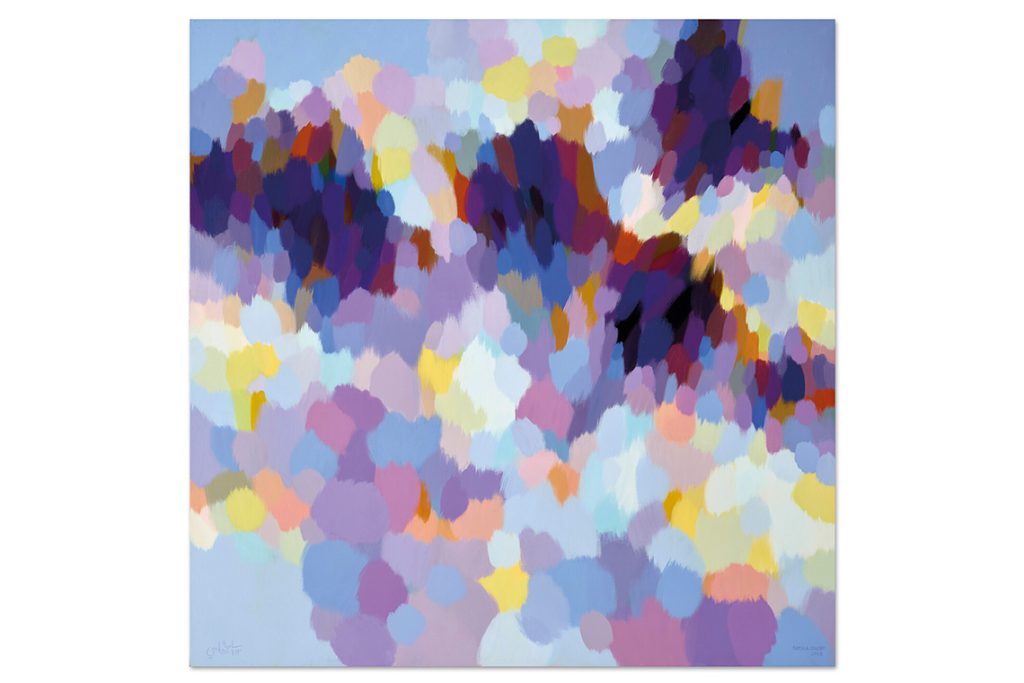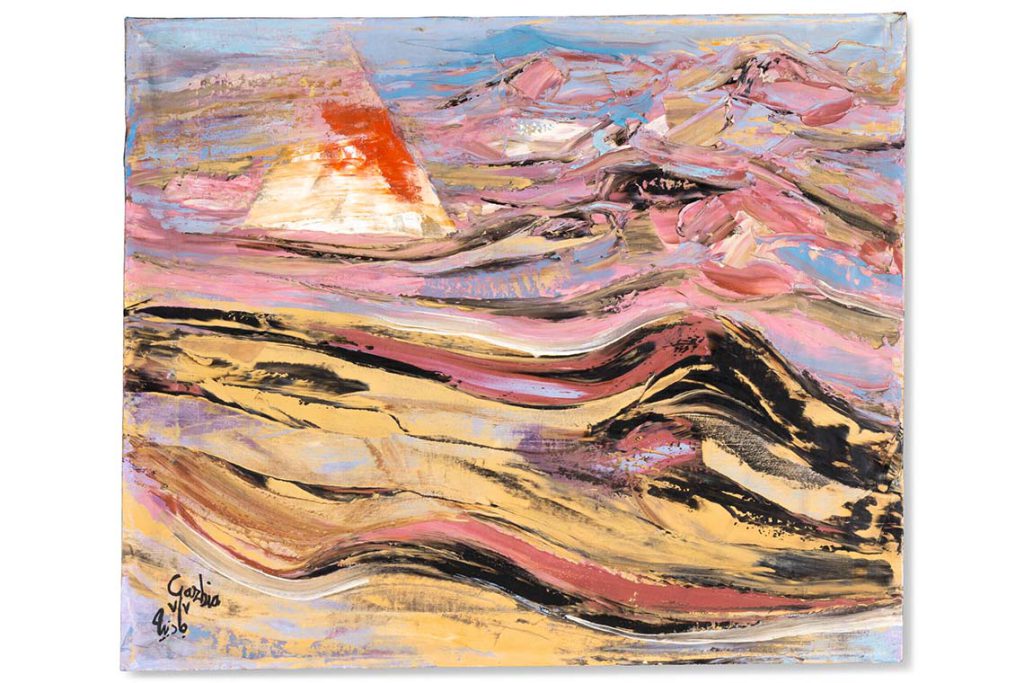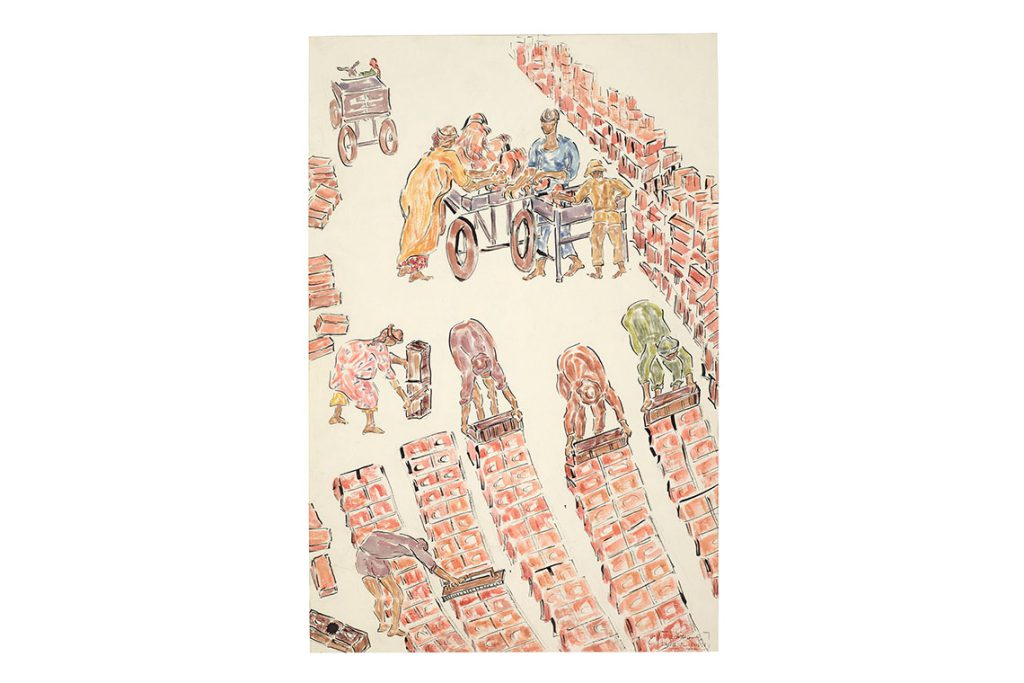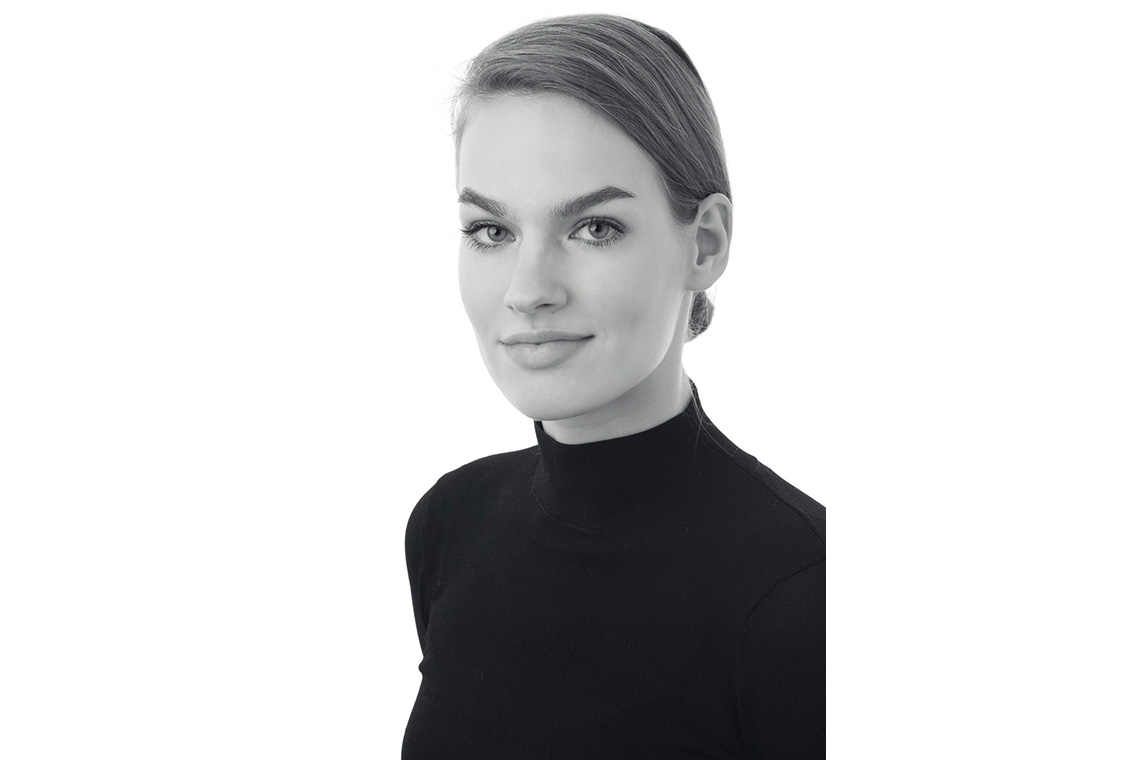The Head of Sale for Modern & Contemporary Middle Eastern Art at Christie’s talks us through the upcoming online auction in Dubai and the current state of the art market in the region and beyond.
Canvas: When and where did your interest in art from the Middle East and North Africa start?
Marie-Claire Thijsen: I have been working at Christie’s Post-War & Contemporary Department in London since 2017 in a specialist capacity across our Evening, Day and Online sales. Artist such as Etel Adnan, whose solo exhibition I saw at the Serpentine Galleries in 2016, Tala Madani and Ali Banisadr are artists from the region who we have been offering in our contemporary auctions and whose practices have particularly struck me. I think it is also due to my studies in international relations that I have been particularly drawn to the Middle East and North Africa. The region has an incredibly rich cultural heritage and an eventful modern history.
Since the beginning of the twentieth century the region has undergone major socio-political and economic shifts which have significantly influenced artistic expression from Casablanca to Cairo and Beirut to Baghdad. This socio-political engagement imbues the art of the Middle East and North Africa with a distinctive poignancy.

How have you seen the Modern & Contemporary Middle Eastern art market grow in recent years, and who is buying art from the region?
The art market in the Middle East and North Africa is among the most dynamic globally. Since Christie’s opened its headquarters in the Middle East in 2005, we have played an important role in shaping the market for Modern and Contemporary Middle Eastern art via ground-breaking auctions as well as loan and private-selling exhibitions.
In recent years we have seen a surge in engagement from regional collectors and institutions, alongside increasing international recognition of the region’s artistic landscape. Last year’s Venice Biennale highlighted a record number of artists from the MENA region and international institutions are increasingly dedicating exhibitions to art from there, such as with the late Lebanese-born Huguette Caland, currently the subject of her first European retrospective at the Museo Nacional Centro de Arte in Madrid.
With rising investment in the cultural sector regionally – particularly from the Gulf states – contemporary artists are gaining greater visibility and reaching broader audiences. The development of the visual culture is also underscored by the growing demand for modern masters, including a remarkable generation of pioneering female artists. This online sale reflects the richness, diversity and vitality, as well as signalling a future full of promise and growth. It brings together museum-quality works alongside works on paper, editions and photographs at more accessible price points to engage both new and seasoned collectors from the region and beyond. Moreover, Christie’s exhibitions are open and free to all, which provides a wonderful opportunity to view, learn and discuss a great variety of artworks.

The Modern and Contemporary Middle Eastern Art online sale in Dubai (3–8 May) has several highlights, including a section featuring women artists. What are some of the works we can expect to see?
Water Lilies is a mesmerising 2013 canvas by Samia Halaby, one of the foremost abstract painters of the Arab world. Her 2000s works are characterised by her departure from the predominant use of clear geometric shapes to more organic forms and smaller brush strokes, creating painterly abstractions in which she explores the complex geometry of nature. In Water Lilies, she presents a captivating vision of a water-lily pond, unveiling an abstract visual language that speaks to the interconnectedness of all living forms and displays a deep sensitivity to the delicate relationships that shape our contemporary world.
Further illustrating the focus on female creativity across both the modern and contemporary periods in this season’s Modern and Contemporary Middle Eastern Art online sale are works by Inji Efflatoun and Gazbia Sirry, two Egyptian female modernists. Brick Workers, from 1980, is a rare work on paper by Efflatoun, a painter, feminist and dedicated political activist whose work channelled the narratives and hardships of the working class. The work originates from the esteemed Dalloul Collection in Beirut, one of the largest and most comprehensive collections of Arab art, formed by Dr Ramzi Dalloul and Saeda El Husseini and advanced by their son, Dr Basel Dalloul. Untitled is a 1977 painting from Sirry’s celebrated Desert series and was exhibited in Paris at the Centre Culturel d’Egypte in 1997 – during our research we found a nice archival image of the artist in front of the picture at this exhibition. It is truly a museum-quality piece, with a comparable work from the same series held in the collection of Mathaf: Arab Museum of Modern Art in Doha.

There is also a section dedicated to artists from Saudi Arabia and which includes masterpieces and contemporary work. Can you talk us through some of these pieces and their significance in the cultural landscape of the Kindgom?
The Saudi Now! section traces the cultural landscape of the Kingdom, including modern masters such as Mohammed Al Saleem’s Desert Plants, a rare early 1970s painting originating from the collection of the artist’s daughter. The work is an important transitionary piece, showcasing how one of the fathers of Saudi modernism developed his style from more naturalistic depictions of the Saudi desert to later works that are increasingly abstract and more poetic in their representation of the vastness of the desert landscape.
The section also includes contemporary works, of which a particular highlight is Illumination X-Ray (Diptych) by Ahmed Mater, a physician turned artist and one of Saudi-Arabia’s most significant cultural voices. In his Illuminations series Mater weaves together past and present by merging traditional Islamic art with the advance of modern medicine, thus uniting two realms often seen as incompatible: faith and science. Drawing from the rich heritage of the Islamic arts of the book – particularly Qur’anic manuscripts adorned with intricate illuminated borders, chapter titles and verse markers – Mater follows a meticulous artistic process that utilises some of the materials traditionally used on these pages, such as tea, pomegranate and alum powder. Although typically a small-scale and intimate art form, in Mater’s hands the scale of the illuminated page is expanded and a different sense of intimacy is created by the incorporation of human X-rays.
Saudi Now! also highlights the new generation of Saudi artistic voices, such as Moath Alofi, Nasser Al Salem and Hmoud Al Attawi, who are based in Riyadh’s creative hub, the JAX District. Through their innovative multimedia practices, they are reshaping artistic conventions and expanding the possibilities of traditional media.
Modern and Contemporary Middle Eastern Art Online Auction Highlights runs until 8 May



